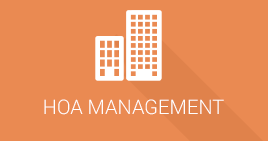Identifying normal wear and tear and how it differs from tenant damage is a hot topic for a lot of owners. Every single tenant wants 100 percent of his or her security deposit back, and every owner wants the tenants to pay for all expenses after move out. Today, we’re discussing what owners can expect when it comes to normal wear and tear versus damage.
Landlord Tenant Law in Washington and Oregon
The law in Washington and in Oregon is that owners are responsible for wear and tear, and tenants are responsible for damage. We educate both our owners and our tenants on what that means. For example, dirt is something that tenants are responsible for. A tenant’s dirt is never wear and tear; it has to be cleaned. Tenants really need to leave the property clean, and that includes clean blinds, clean ceiling fans, clean appliances, and clean carpets.
Normal Wear and Tear: Painting
Painting the walls is an owner’s responsibility unless the walls were damaged by the tenants. If there’s a big hole that requires sheetrock to repair it, then the tenants can be charged for that damage. But, scuff marks on the wall are normal, and so are small nail holes. The owner must pay to paint over them. Painting is not billed to tenants unless there is damage to the walls.
Carpet Depreciation and Replacement
Tenants often don’t understand carpets and how they’re replaced. The industry standard is that a carpet has a useful life of between seven and 10 years. So, if a tenant moves in with new carpet and stays for five years, the carpet may need to be replaced after that tenant moves out. Since two years of that carpet’s life were lost, the tenant will have to pay back that depreciated amount.
Inspections and Documentation
 Having a move-in inspection and a move-out inspection is critical. You can assess the condition of the property. A full inspection with pictures before a tenant moves in and after the tenant moves out is mandatory. It will protect both the owner and the tenant. Your property manager will take care of this for you, and if you’re not working with a property management company, make sure you conduct these inspections yourself. It’s not a step you should miss.
Having a move-in inspection and a move-out inspection is critical. You can assess the condition of the property. A full inspection with pictures before a tenant moves in and after the tenant moves out is mandatory. It will protect both the owner and the tenant. Your property manager will take care of this for you, and if you’re not working with a property management company, make sure you conduct these inspections yourself. It’s not a step you should miss.
If you have any questions about real estate investing and how to differentiate between wear and tear and damage, contact us at Invest West Management. We’d be happy to help.

















